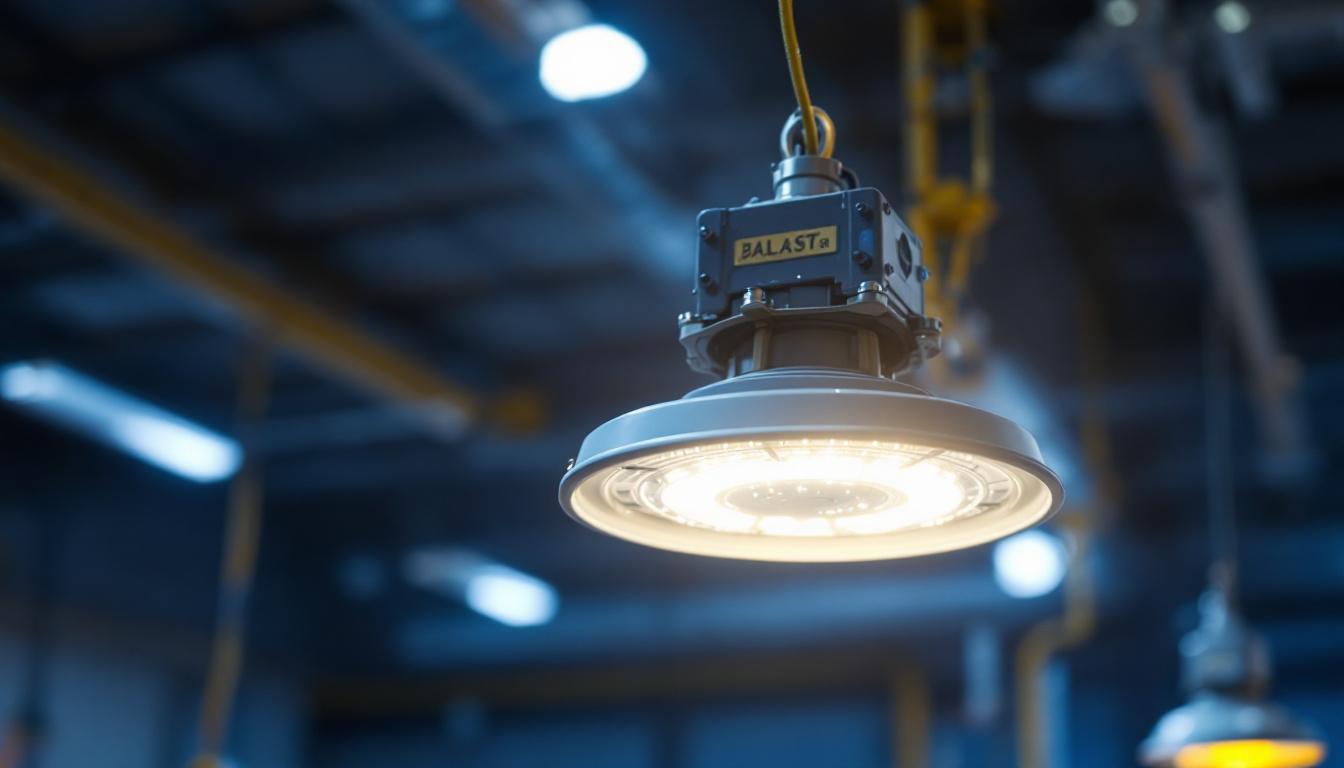
The invention of the light bulb revolutionized the way we illuminate our homes, businesses, and public spaces. For lighting contractors, understanding the tools and techniques that led to the development of this essential device can provide valuable insights into modern lighting solutions. This article delves into the historical tools used in light bulb creation and explores how this knowledge can benefit lighting contractors today.
The journey of the light bulb is a fascinating tale of innovation, experimentation, and the relentless pursuit of efficiency. From the earliest forms of illumination to the sophisticated designs we see today, the evolution of light bulb technology has been marked by significant advancements.
Initially, lighting was achieved through candles, oil lamps, and gas lights. However, the quest for a more reliable and safer source of light led inventors to explore electric lighting. The development of the incandescent light bulb marked a pivotal moment in this journey, paving the way for a new era of illumination.
Before the light bulb as we know it was created, various inventors experimented with electric arcs and filaments. These early experiments utilized basic tools such as batteries, wires, and rudimentary glass enclosures. The goal was to create a sustained light source that could be used in homes and businesses.
Tools like the voltaic pile, an early form of battery, were instrumental in providing the necessary electrical current for these experiments. Inventors like Humphry Davy and Warren de la Rue utilized these tools to create the first electric light sources, setting the stage for the eventual creation of the incandescent bulb. Davy’s arc lamp, which produced light by creating a spark between two carbon rods, was one of the first demonstrations of electric light, illuminating the possibilities that electricity could offer. These early innovations, although not practical for widespread use, ignited a spark of curiosity that would lead to further breakthroughs in lighting technology.
Glassblowing played a crucial role in the development of the light bulb. The ability to create glass enclosures allowed inventors to contain the filament and protect it from the surrounding environment. This was essential for ensuring the longevity and efficiency of the light bulb.
Artisans skilled in glassblowing used tools such as blowpipes and molds to shape the glass into the desired forms. The craftsmanship involved in creating these glass enclosures was vital, as the quality of the glass directly impacted the performance of the light bulb. As the demand for electric light grew, so too did the sophistication of glassblowing techniques. Innovations such as the introduction of vacuum-sealed bulbs and the use of different glass compositions helped to enhance the brightness and lifespan of light bulbs. Additionally, the aesthetic aspects of glass design began to flourish, with decorative elements becoming a hallmark of many light fixtures, transforming them from mere functional objects into integral components of interior design.
As the technology advanced, so did the tools used in the production of light bulbs. Understanding these tools can provide lighting contractors with insights into the manufacturing process and the quality of the products they work with.
Modern light bulbs are produced using a combination of traditional and advanced tools, each playing a specific role in ensuring the final product meets industry standards.
The filament is the heart of an incandescent light bulb. The production of high-quality filaments requires precision tools that can handle the delicate materials involved. Tungsten, for instance, is commonly used due to its high melting point and durability.
Tools such as wire drawing machines and filament winding machines are essential in creating the fine strands of tungsten that will eventually produce light when heated. Understanding these tools can help lighting contractors appreciate the intricacies involved in filament production and the importance of choosing the right bulbs for specific applications. Moreover, advancements in filament technology, including the development of halogen and LED filaments, have introduced new materials and processes that enhance energy efficiency and lifespan, making it crucial for contractors to stay updated on these innovations.
In addition to glassblowing, modern glass manufacturing involves sophisticated equipment that can produce consistent and high-quality glass enclosures. Automated glass forming machines and annealing lehrs are just a couple of examples of the technology used in this process.
These machines ensure that the glass is not only shaped correctly but also treated to withstand the heat generated by the filament. For lighting contractors, knowledge of the glass manufacturing process can inform decisions about bulb selection, particularly in applications where durability and heat resistance are critical. Furthermore, the introduction of eco-friendly glass materials and coatings has revolutionized the industry, allowing for lighter and more energy-efficient bulbs that reduce environmental impact while maintaining performance standards.
The final steps in light bulb production involve sealing the filament and assembling the components. This requires specialized tools such as vacuum pumps and sealing machines. The vacuum inside the bulb is crucial for preventing the filament from oxidizing and burning out quickly.
Understanding the sealing process can help lighting contractors recognize the importance of bulb integrity and longevity. When selecting products for clients, knowledge of the assembly process can aid in recommending options that will perform well over time. Additionally, the rise of smart lighting technologies has introduced new assembly challenges, as these bulbs often incorporate electronic components that require precise integration and testing to ensure functionality and reliability, making it essential for contractors to be familiar with these modern production techniques.
As technology continues to evolve, so does the lighting industry. The rise of LED technology has transformed the landscape of light bulbs, offering energy-efficient alternatives to traditional incandescent bulbs. Lighting contractors must stay informed about these innovations to provide the best solutions for their clients.
Modern tools used in the production of LED bulbs differ significantly from those used for incandescent bulbs. Understanding these differences can enhance a contractor’s ability to recommend the right products for specific lighting needs.
The production of LED bulbs involves a different set of tools and techniques compared to traditional bulbs. Soldering stations, die bonders, and wire bonders are essential in assembling the intricate components of LED technology.
These tools ensure that the individual LED chips are securely attached and connected, allowing for optimal performance. Knowledge of these manufacturing techniques can empower lighting contractors to better understand the reliability and efficiency of the products they offer.
Quality control is paramount in the lighting industry, especially with the growing demand for energy-efficient solutions. Testing equipment such as photometers and spectrometers are used to measure the performance of light bulbs, ensuring they meet industry standards.
By familiarizing themselves with these testing tools, lighting contractors can make informed decisions about the products they recommend to clients. This knowledge can also enhance their credibility and professionalism in the eyes of customers.
Understanding the tools used in the creation of light bulbs offers several benefits for lighting contractors. This knowledge not only enhances their expertise but also enables them to provide superior service to their clients.
By being well-versed in the intricacies of light bulb production, contractors can make informed choices when selecting products, ensuring they meet the specific needs of their clients. Additionally, this understanding can lead to improved customer trust and satisfaction.
With a solid grasp of the tools and techniques used in light bulb production, lighting contractors can better educate their clients about the products they offer. This enhanced product knowledge allows contractors to explain the benefits of different types of bulbs, from incandescent to LED, and guide clients in making informed decisions.
Clients are more likely to trust contractors who can provide detailed information about the products they recommend. This trust can lead to repeat business and referrals, ultimately benefiting the contractor’s bottom line.
Knowledge of the manufacturing process equips lighting contractors with the skills to troubleshoot issues that may arise during installation or maintenance. Understanding the intricacies of light bulb technology allows contractors to identify potential problems and offer effective solutions.
For instance, if a client experiences frequent bulb failures, a contractor with a deep understanding of the production process can investigate whether the issue lies with the quality of the bulbs, the installation, or the electrical system. This proactive approach can save time and resources while enhancing customer satisfaction.
The lighting industry is constantly evolving, with new technologies and trends emerging regularly. By staying informed about the tools and techniques used in light bulb production, contractors can remain competitive in the market.
Being aware of advancements in lighting technology, such as smart lighting solutions and energy-efficient products, allows contractors to offer cutting-edge options to their clients. This adaptability can set them apart from competitors and position them as industry leaders.
The journey of the light bulb from concept to reality is a testament to human ingenuity and innovation. For lighting contractors, understanding the tools and techniques that contributed to this evolution can provide valuable insights into the products they work with. This knowledge not only enhances their expertise but also empowers them to offer superior service to their clients.
By embracing the history and technology behind light bulb production, lighting contractors can improve their product knowledge, problem-solving skills, and ability to stay ahead of industry trends. Ultimately, this understanding can lead to increased customer satisfaction and business success in the ever-evolving world of lighting.
Ready to enhance your lighting projects with the highest quality products at the best value? Look no further than LumenWholesale. Our spec-grade lighting solutions are designed to meet the needs of the most discerning lighting contractors, offering unbeatable wholesale prices and the convenience of bulk buying without hidden fees. Say goodbye to inflated markups and hello to a vast selection of reliable, high-performance lighting that meets the highest industry standards. Plus, with free shipping on bulk orders, you can trust that you’re getting premium lighting at the best price. Don’t compromise on quality or affordability. Discover wholesale lighting at the best value today and bring superior service to your clients with LumenWholesale.

Explore the rising significance of top-down lighting in the industry, uncovering its benefits, innovative applications, and how it’s shaping the future of illumination design.

Discover essential insights and expert advice for lighting contractors on selecting and installing outdoor fluorescent bulbs.

Discover the essentials of ballast light fixtures in this comprehensive guide, covering compliance standards and key insights for lighting contractors.

Explore the benefits and drawbacks of solar LED lighting with expert insights tailored for lighting contractors.